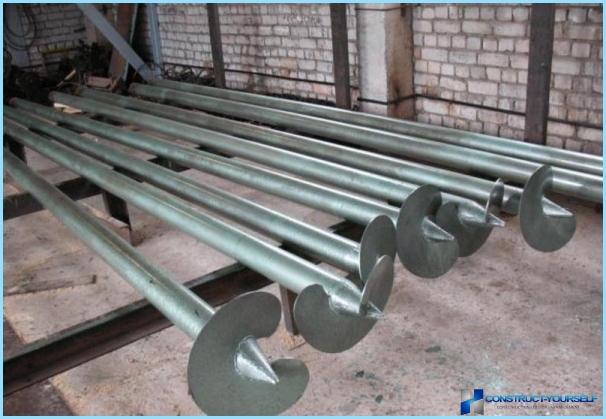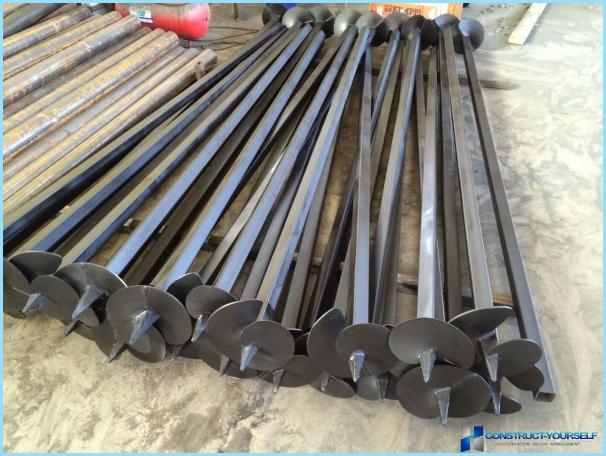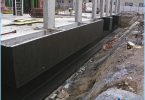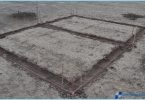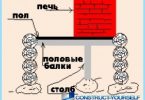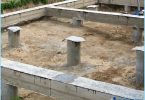The contents
Prior to the construction of the Foundation it is important to properly choose. Each Foundation has its positive and negative characteristics. Select the basis for new home or cottage, involves consideration of the geological conditions of the site, the maximum load on the Foundation.
Classification of modern foundations ↑
There is a division of the Foundation under the house the types and.
On purpose they are divided:
- bearing;
- combined (able to withstand tremors);
- shallow;
- deep foundations;
- special (given the complexity of the land).
The type of material used:
- stone (crushed brick);
- reinforced concrete (design team or the monolith);
- wood;
- cellular concrete.
Design type:
- tape (precast or monolithic, which is installed below or above the level of soil freezing);
- columnar;
- pile (precast or monolithic with different types of piles: bored piles, concrete pipe, precast, screw);
- slab;
- combined piled–raft.
In the video you can see the installation of piles, using a drill:
Feature strip Foundation ↑
Strip Foundation suitable for low-rise construction. Feature of it is the possibility of installation for the various structures. If you add to it the pile, in this case, the construction can be made from any material.
Not all have an idea of how to make a pile-strip Foundation with his own hands.
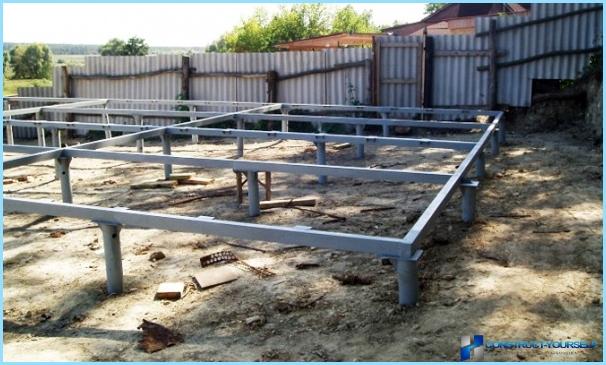
Pros:
The Foundation for the future property is perfect for those areas that have poor soil, characterized by high humidity, have a significant bias. Marshy soils of the Arkhangelsk region, Karelia, ideal for decorating the pile–strip Foundation.
- The construction of strip Foundation allows the use of a solution which is prepared directly on the construction site.
- The basis of this type can be equipped even on the most difficult land.
- For construction use, affordable.
- Consumption of materials for the construction of the Foundation is minimal.
Cons:
- In the case of a pile–strip Foundation it is impossible to equip a full basement.
- Required prior to construction to conduct a qualitative calculations, using the help of professionals. In case of wrong calculation of consequences can be severe, the Foundation will not withstand the load, house «will stilts».
- Strip Foundation not suitable for the construction of buildings with massive walls and roof.
Variety of strip Foundation ↑
Currently use two main types of such foundations under buildings:
- design based on the use of bored piles;
- fundamentals of metal screw piles.
Screw piles – a type of large screws that are threaded. These screws are screwed into the ground. The presence of the thread significantly improves the quality of adhesion of the piles, increase the reliability of the design. The size of the piles leaves 4-6 meters.
Driven piles ensure maximum durability of the base. Nail in the ground the load should be similar to that which will provide the walls and roof. At the end of penetration, the pile reaches the ground, where will be located the new building.
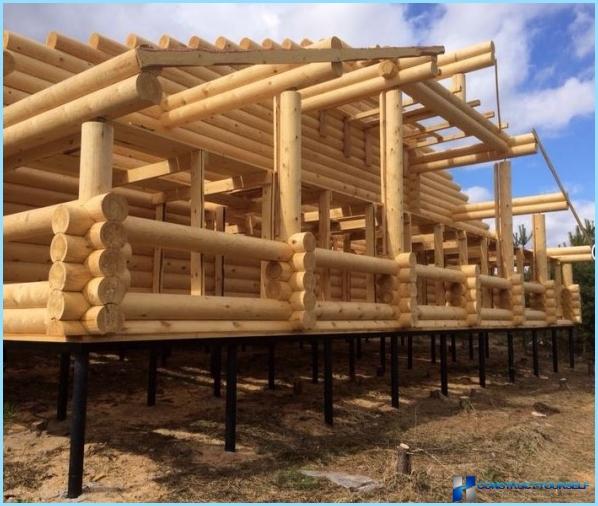
The specifics of the installation ↑
Bored piles are installed using a drilling. If the area of dense soil, the solution is poured into the finished hole. For areas with loose soil would require a special casing of the well. For this, take a pipe made of modern waterproof material, is inserted in the finished hole, and then filled with saline. This way you can do the pile-strip Foundation with his own hands.
Unit–pile tape soles ↑
It is customary to divide the sole of the piles into subspecies:
- small sunken;
- nezaglublennom.
The first option of soles suitable for construction of multi-storey wooden buildings. Nezaglublennom – optimal for the construction of baths.
The algorithm of building the Foundation ↑
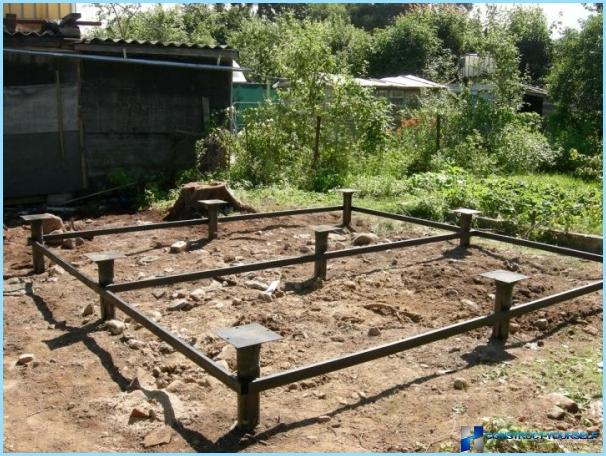
- First, under the future foundations need to partition base.
- Next, dig a trench, its depth should be in the range of 40-50 cm, width depends on the size of the future sole.
- Around the perimeter and the corners of the layout are drilling wells. The distance between the holes can not be more than 2 meters, the depth depends on the depth of freezing ground in the specific area. An average of 50 cm is sufficient to create a complete cushion of sand (25-30 cm) at the bottom. For the strength of the Foundation remains of a space to be filled with concrete.
- Once at the bottom of the well will be filled with the sand layer of 30 cm, it is possible to proceed to the construction of the formwork. It must be securely fixed, otherwise the solution would wreck her.
- Perform reinforcement of the Foundation. This step is most critical when you are creating a new Foundation. In addition to the tape, reinforcement runs around the piles, this requires a fixture with a diameter of 1.2 cm.
- The final step is pouring the Foundation. First, fill all the wells ramming solution every 15-20 see these actions will help to get rid of voids that undermine the Foundation. The fill serves both to fill was uniform and full.
- After 2-3 days, the formwork is removed, the roofing material is insulated the Foundation from moisture.
Low-depth foundations ↑
Its peculiarity consists in the penetration into soil by 70% from a possible freeze. Like the Foundation under the house is a monolithic reinforced concrete tape, which is being built under the bearing walls of the building.
The advantages of such a Foundation:
- efficiency;
- minimum time and labor costs of creating, saving materials;
- ease of construction with our own forces;
- high strength.
Disadvantages:
- is not suitable for all soil types;
- at low groundwater level, such a framework it is impossible to make;
- the cost is significantly higher than in the construction of pier Foundation.
The specificity of the structures ↑
- The first plans of the site, its construction twine ribbon or cord, is performed on the site layout.
- Then do the excavation work. The trench for such a Foundation should be to a depth of 50-70 cm.
- Further, settling a pillow of sand or mixtures of sand and gravel.
- The formwork is created from edging boards, planks, fabricated metal structures.
- The inner wall of the casing is covered with a waterproof layer.
Considerations for foundations under the house, you can use the online calculator of the Foundation, with its help calculate the average cost of a pile-tape-bored variant of the base under the house:
The choice of foundations for building depends on several parameters:
- material from which to build the walls;
- weight design of the truss system;
- weight of roofing material;
- the quality of the soil on the site;
- financial possibilities of the owner of a suburban area
The success of the construction depends on the quality of the laying of the Foundation, the correctness of his choice, so suggest a selection option of the Foundation, its construction, maintenance, trust the true professionals.

